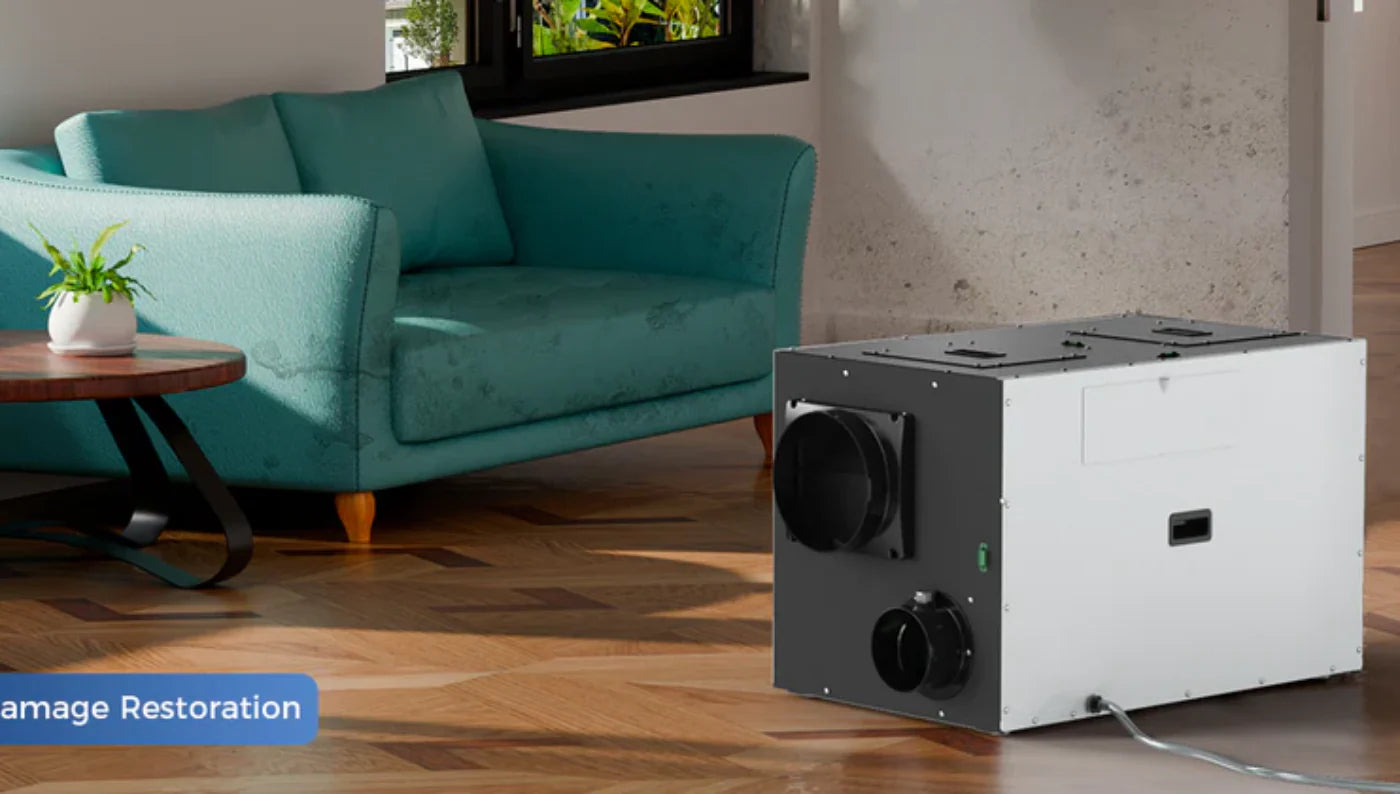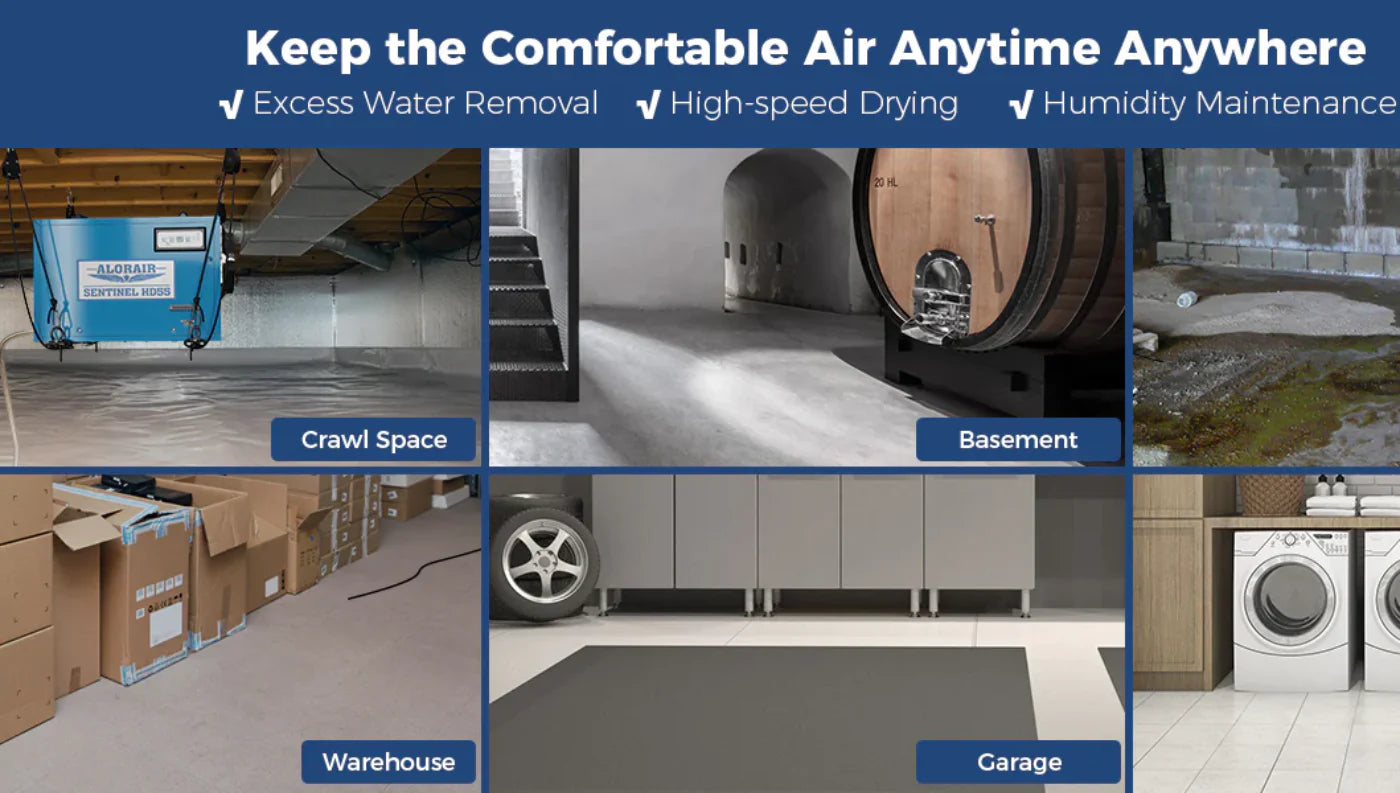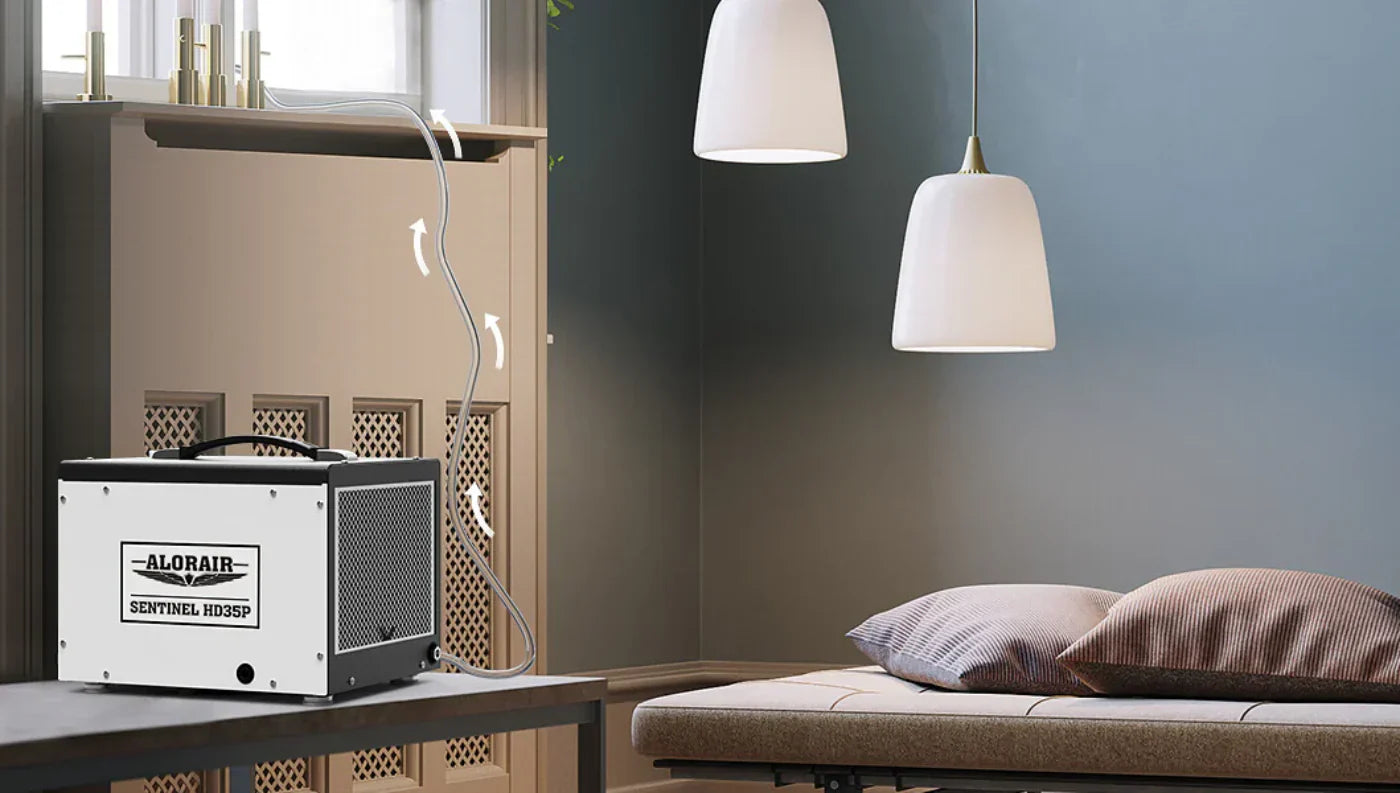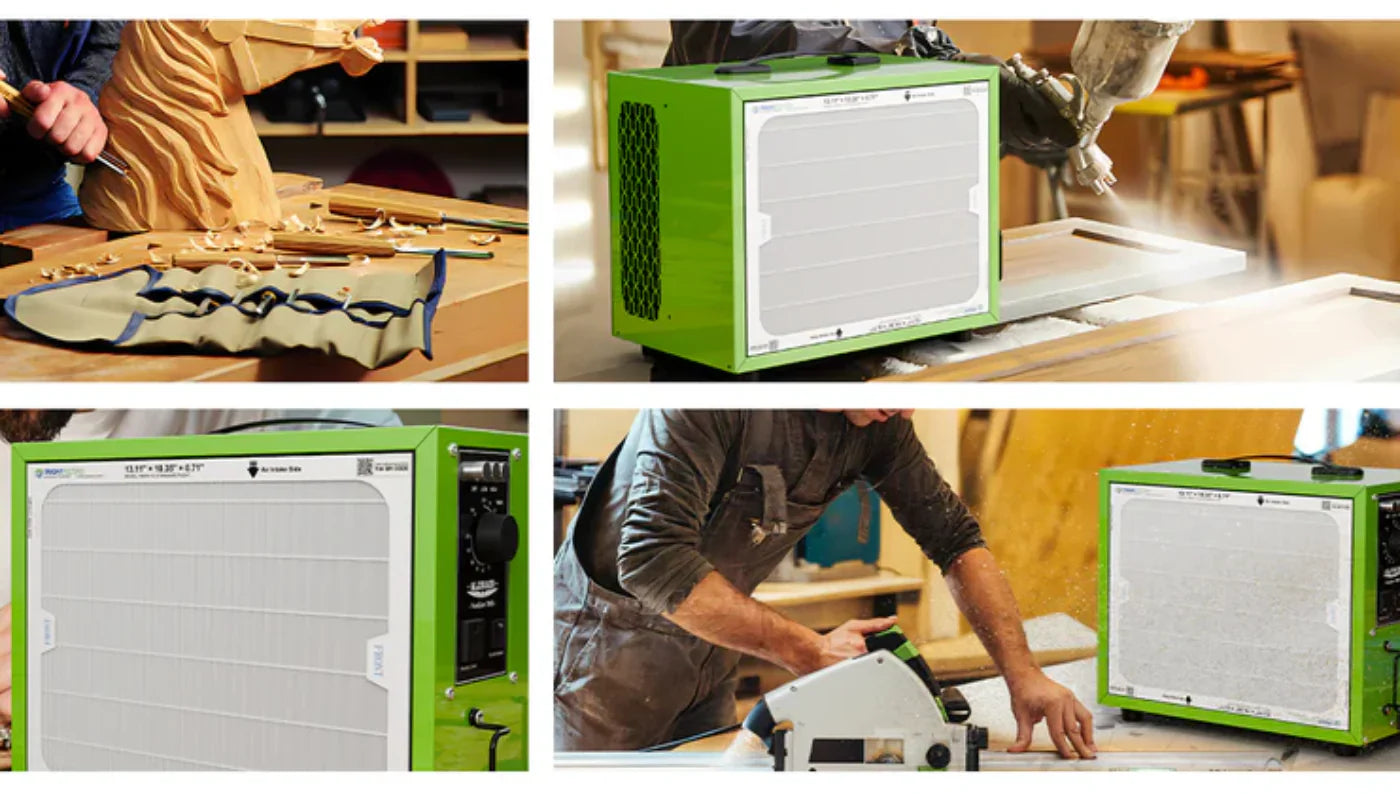When tackling moisture problems under your house, you’ll often hear the question: “Can I just use a regular dehumidifier in the crawl space?” The short answer: yes—but with important caveats. If you want reliable performance, protect against mold and wood rot, and avoid huge energy bills, it’s worth understanding the key differences between a crawl space–rated dehumidifier and a typical regular home/room dehumidifier.
In this article we’ll explore how these two types compare, why crawl-spaces demand special equipment, when a regular dehumidifier might work (and when it won’t), and what to look for when you’re buying. We’ll also cover small product-type considerations (even though the main difference is application not brand).
Why Crawl Spaces Are Different from Regular Rooms
Crawl spaces are unique environments and pose more challenging conditions than typical living rooms, bedrooms or basements. Some of the reasons:
- They are often cooler and more humid than the house interior, especially if not encapsulated. Regular units may struggle in lower temperatures.
- They often have limited clearance, awkward access, and may require wall or ceiling mounting rather than placement on a floor in a living space.
- Air-exchange and infiltration from soil, ground moisture, vents and wrapped insulation mean the moisture load can be higher and the environment more variable.
- Because of these conditions, the dehumidifier often must run continuously or nearly so, handle greater “pints of water removed per day” capacity, and often include features like drainage pump, rugged build, and low-temperature operation.
Given these differences, manufacturers and contractors often recommend crawl space–specific dehumidifiers rather than simply buying a regular consumer unit and expecting it to perform equally.
What Are the Main Differences?
1. Capacity & Moisture Removal Rate
Crawl space models typically are rated for higher moisture loads (often measured in “pints per day” or “water removal capacity”) and for harsher conditions. For example, a crawl-space dehumidifier might be rated 70-120 pints/day or higher for a given volume, and designed for conditions of higher humidity.
Regular dehumidifiers (for rooms or basements) may be adequate for moderate spaces but may struggle in a large, damp crawl space. As one guide says: “regular dehumidifiers may struggle to operate effectively in these conditions.”
2. Design & Features for Crawl Conditions
Crawl-space units often include features that regular models may lack or handle poorly:
- Built-in condensate pumps or long-drain options (important if gravity drainage is limited)
- Low-temperature operation (so they work even when space is cooler)
- Rugged construction, mounting options for wall or ceiling, and remote monitoring
-
Extended drip pans or auto-drain hookup for long-term unattended operation
Meanwhile, regular units may have only simple bucket collection or short drain hose, limited temperature tolerance, and less rugged build.
3. Efficiency & Continuous Operation
Because the crawl space unit often runs more hours and under harsher conditions, manufacturers build them for more continuous duty. Regular units may over‐heat, freeze up, or cycle inefficiently in a crawl environment. One source indicates that while you could use a regular dehumidifier, it “will often cost more in the long run due to inefficiency and possible maintenance issues.”
4. Sizing and Application
Crawl-space units are sized specifically for the environment—low ceiling height, limited airflow, possible multi-zone volume. Manufacturers like AlorAir provide sizing guidance for crawl/basement series models: “This series is meant for high humidity environments, especially tight spaces like crawlspaces…”
Regular dehumidifiers are sized more for typical room volumes, and may have less capacity margin for a crawl space.
5. Placement and Installation
In crawl space installations you may need to mount on a wall or suspension, ensure clearance from joists, allow for long drain runs, consider access for maintenance, and possibly deal with colder temperatures or sealed encapsulated conditions. Regular units assume floor placement and easier access.
When Can You Use a Regular Dehumidifier in a Crawl Space?
Yes, there are situations where a regular dehumidifier might suffice:
- If the crawl space is small, well‐sealed, insulated, and has a modest moisture load (not water leak or standing water).
- If the unit is placed in a well-ventilated, accessible location and drainage is simple.
- If cost is a big concern and you accept that it may require more maintenance, run longer, and may not perform optimally.
From Reddit:
“I have a 2000 sq foot house with crawlspace. I put a regular dehumidifier under there… and still going strong.”
So it can work—but you’re trading risk and possibly performance.
When a Crawl Space–Rateddehumidifier Really Makes the Difference
You’ll see the benefit of a crawl‐space model when:
- The crawl space is large, very humid, with high moisture ingress (from soil, leaks, condensation).
- The space is cold (below ~65°F) and the regular unit would freeze or struggle.
- Drainage is difficult (lack of floor drain, need pump or long hose).
- You want maintenance-free operation, less risk and fewer callbacks.
- You have encapsulation and want to control humidity precisely (e.g., 45-55% RH).
One guide says: “Crawl space dehumidifiers are built specifically for the tough environment found beneath homes… They are more robust than regular dehumidifiers, designed to handle high humidity levels and operate in cooler temperatures.”
Product Example Section: Crawl Space Model vs Regular Model
Alorair 145 PPD Crawl Spaces Dehumidifier with Pump and Drain Hose

Description: A dedicated crawl space dehumidifier with built‐in pump, low temperature capability, wall/ceiling mount.
Advantages: Designed for crawl space environment, higher capacity, more rugged, better drainage.
Disadvantages: Higher upfront cost; may be more than needed if your space is minimal or already well sealed.
AlorAir 180 Pint Crawlspace Dehumidifiers with Pump and Drain Hose

Description: A consumer room dehumidifier (bucket or simple hose drain) designed for living spaces.
Advantages: Lower cost, easier to buy/replace, simpler install for accessible areas.
Disadvantages: May struggle in cooler damp crawl space; may require frequent manual emptying or more cycles; may not last as long; may not be optimized for hard conditions.
Frequently Asked Questions
Do I absolutely need a crawl space‐rated dehumidifier instead of a regular one?
Not absolutely—but very often yes if your crawl space is large, humid, or has drainage/temperature challenges. A regular dehumidifier might work in a mild scenario, but it may cost more in energy, maintenance, and performance.
Will a regular dehumidifier work if I encapsulate the crawl space?
Encapsulation reduces moisture ingress, which helps. But if your unit isn’t designed for the environment (cold, limited clearance, drainage) it still may underperform. A crawl‐space model will give you better margin for error.
What happens if I use a regular dehumidifier and it’s undersized or not up to the task?
It may run nearly continuously, fail to maintain your desired relative humidity (RH), allow mold or wood rot to develop, use more energy, and possibly require earlier replacement. One DIY forum noted that a regular unit might simply be overwhelmed in crawl space conditions.
Is the only difference capacity and cost?
No—while capacity is a major difference, features like pump drainage, low-temp operation, rugged build, mounting options and filtration all play a role. The environment under a house is different than a living space, so the whole design is different.
How can I tell if my crawl space dehumidifier is sized properly?
Look at the model’s pints/day rating (for example units designed for crawl/basement may list 55-140 pints/day) and compare to your crawl space size, humidity load, and conditions. Manufacturer sizing charts (e.g., AlorAir) help match space size + condition (damp, very damp, exceptional load).
Conclusion
While it’s tempting to save money by grabbing a regular dehumidifier and tossing it into your crawl space, the reality is that crawl space conditions require special consideration. A dedicated crawl space-rated dehumidifier offers higher capacity, better features, and more reliable performance in difficult conditions.
If your crawl space is small, sealed, and low risk, a regular unit might suffice—but for peace of mind, structural protection, mold prevention and long-term value, choosing the right equipment makes a difference. In short: size matters, features matter, and environment matters.













